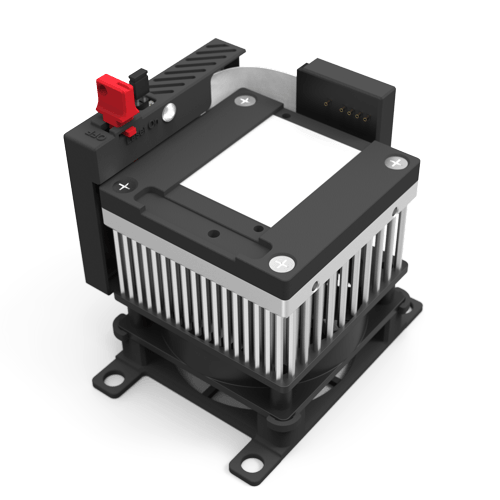515 nm Laser
Item Code: 0515L-11C-NI-NT-NFDescription
515 nm nanosecond laser is a substitute for Argon lasers in many applications, including sorting, illumination, and pump-probe spectroscopy. It's primarily applications lie in LiDAR, harmonic generation and pumping of ultra-fast lasers.
Other potential applications of this laser are:
- pumping of Ti:Sapphire lasers
- supercontinuum generation deep UV generation
- Raman shift excitation in H2 filled fibers
This an economical nanosecond green laser for industrial environment. Due to small form factor, this laser meets SWAP-C requirements.
Laser Rental
Rent a high-performance laser for a time-limited experiment. Or try several laser options before deciding, which to choose.
Success
Your request has been sent successfully. We'll get back to you as soon as possible.
Back to homepageRequest
Begin your product purchase process, with flexibility for customization based on your needs.
Success
Your request has been sent successfully. We'll get back to you as soon as possible.
Back to homepage| Parameter | Minimum Value | Typical Value | Maximum Value |
|---|---|---|---|
| Central wavelength, nm | 514.5 | 515 | 515.5 |
| Longitudinal modes | - | Multiple | - |
| Spectral line width FWHM, nm | - | 0.3 | 0.8 |
| Pulse duration, ns (FWHM) | 1.4 | 1.5 | 1.8 |
| Repetition rate, kHz (depending on pulse energy) | - | 3 (other options on request) | 10 |
| Pulse energy, µJ | - | 20 (other values available on request) | 40 (possible with external triggering) |
| Output power, mW 1 | - | 60 | - |
| Power stability, % (RMS, 8 hrs) 2 | - | 0.5 | 1 |
| Pulse-to-pulse stability, % | - | 10 | 30 |
| Transversal modes | - | TEM00 | - |
| Beam diameter at aperture (1/e2), mm | - | 1 | - |
| Control interface type 3 | - | UART | - |
| Operation mode | - | APC (CW) | - |
| Input voltage, VDC | - | 5 | - |
| External power supply requirement | - | +5 V DC, 5A | - |
| Dimensions (LxWxH), mm 4 | - | 50 x 30 x 18 | - |
| Beam height from the base, mm | - | 10.4 | - |
| Heat-sinking requirement, °C/W | - | 0.5 | - |
| Optimum heatsink temperature, °C | - | 20 | - |
| Warm up time, mins (cold start) | - | 10 | - |
| Temperature stabilization | - | Internal TEC | - |
| Overheat protection | - | Yes | - |
| Storage temperature, °C (non-condensing) | - | - | - |
| Net weight, kg | - | 0.29 | - |
| Max. power consumption, W | - | 14 (10000) | - |
| Warranty, months (op. hrs) 5 | - | 14 (10000) | - |
| Residual IR wavelength contrast, dB | - | 10 | - |
| RoHS | - | Yes | - |
| CE compliance | - | - General Product Safety Directive (GPSD) 2001/95/EC - (EMC) Directive 2004/108/EC |
- |
| Laser safety class | - | 3B | - |
| OEM lasers are not compliant with | - | IEC60825-1:2014 (compliant using additional accessories) | - |
| Country of origin | - | Lithuania | - |
1 The optical power can be tuned from virtually 0% to 100%. However, other specifications, such as central wavelength, power stability, noise, polarization ratio, beam shape, quality and circularity are not guaranteed at power levels other than factory preset power. Significantly worse power stability is to be expected at very low power levels, e.g. <3% from specified nominal power.
2 The long term power test is carried out at constant laser body temperature (+/-0.1 °C) using an optical power meter with an input bandwidth of 10 Hz. The actual measurement rate has a period of about 20 seconds to 1 minute.
3 Break-out-boxes AM-C8 and AM-C3 can be used for conversion of UART communication to either USB or RS232.
4 Excluding control interface pins and an output window/fiber assembly.
5 Whichever occurs first. The laser has an integrated operational hours counter.
Drawing
The key dimensions of a free-space MatchBox.


Photoacoustic imaging
Photoacoustic imaging is a process where powerful laser pulses interact with material by exciting acoustic waves. Similarly, as in ultrasound imaging, the propagating acoustic waves are analyzed by piezo-based detectors (pick-ups), and the complete 3D image is formed by raster scanning or other techniques, such as laser-based holography or interferometry.







